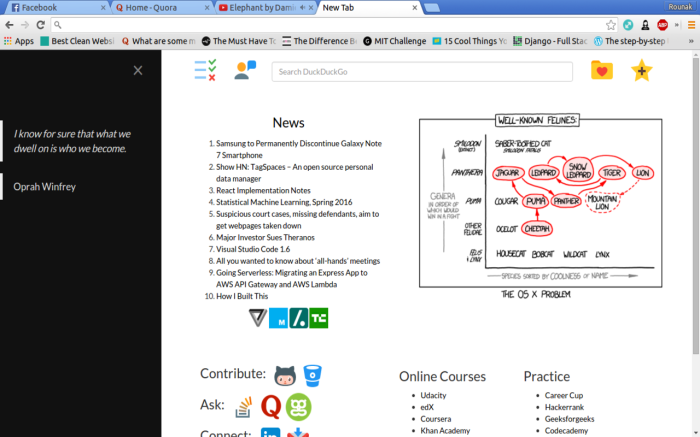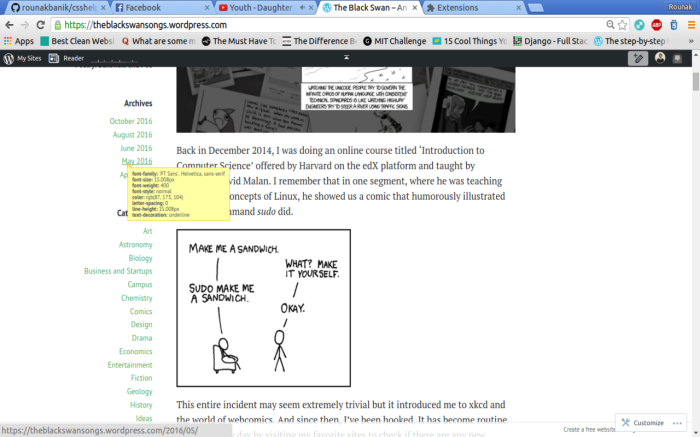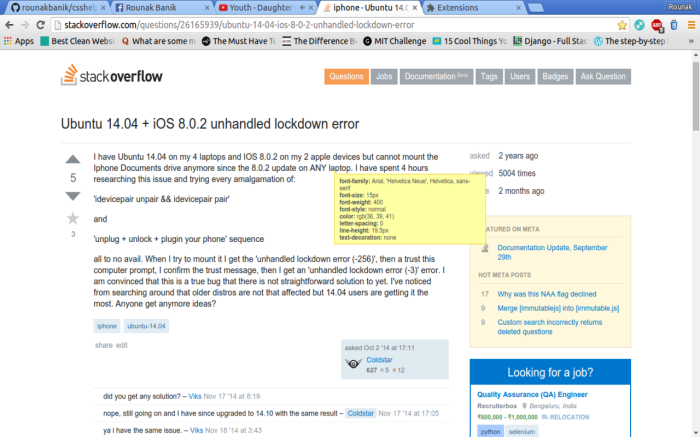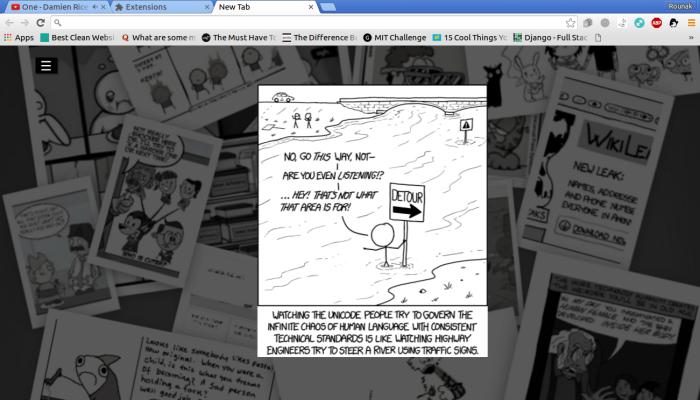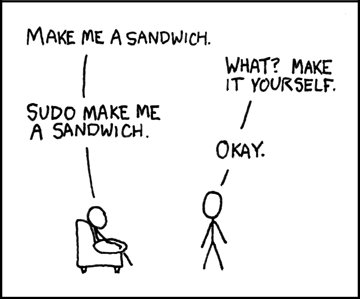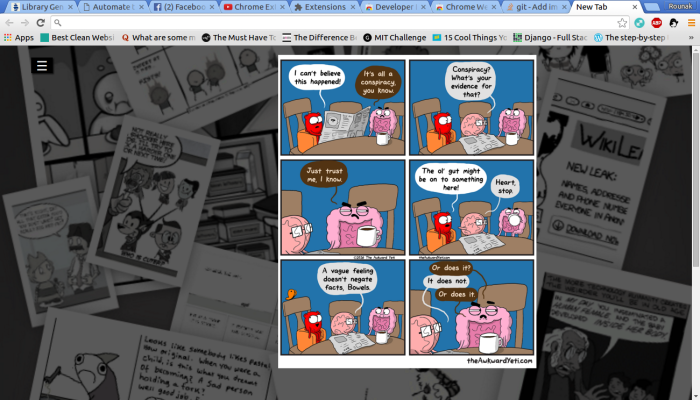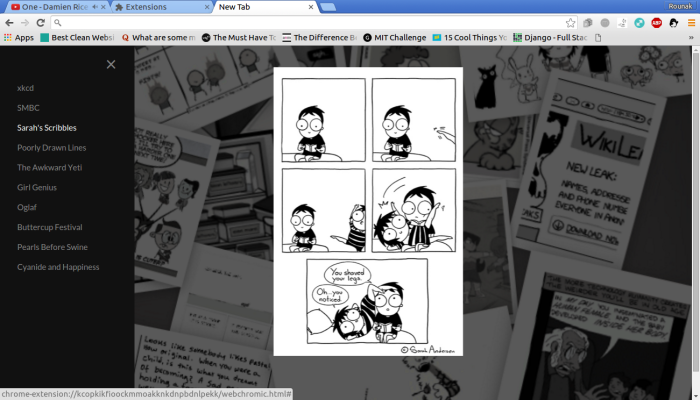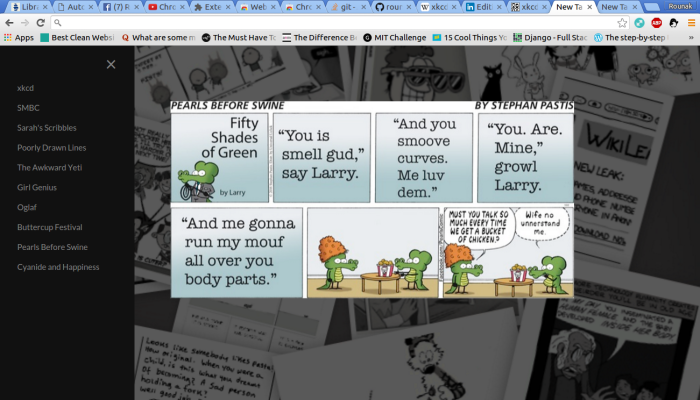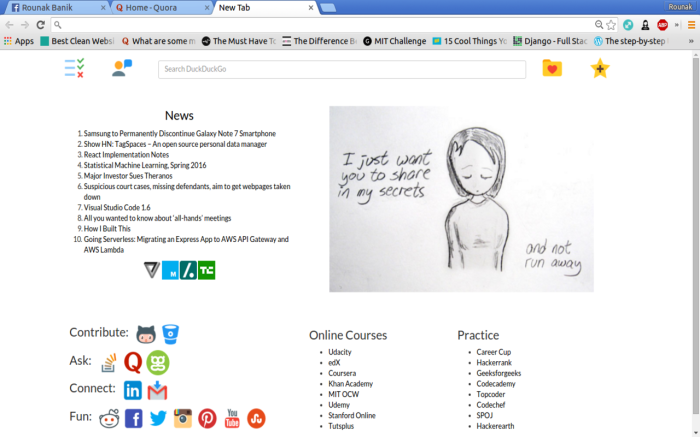
I’ve released the last of my planned Chrome Extensions today (I had dubbed the project The Chrome Swan). It is called The Developer’s Desktop or Devdesk, for short. It is a productivity extension built for designers, developers, programmers and geeks.
The extension is finally available on the Google Chrome App Store. You can find it here: Developer’s Desktop.
What the extension essentially does is bring you the latest news and the best webcomics to your Chrome homepage. This way, every time you open a new tab, you will be treated to one of Randall Munroe’s best xkcd comics as well as the hottest updates from Hacker News. Also, there are links to other websites such as Mashable, The Verge, Slashdot and Tech Crunch.
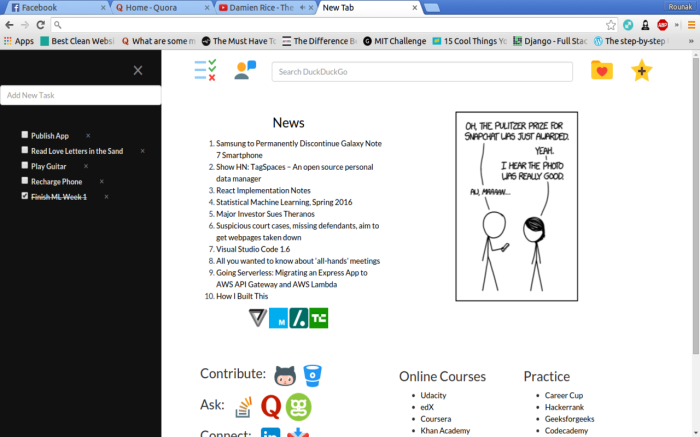
In addition to keeping you up to date with the geek world and providing you sufficient dosages of geek puns and romance, the extension also has multiple utilities built into it. It features a to-do list that allows you to add, check off and delete tasks throughout the course of the day. The search bar lets you search the open sourced engine, DuckDuckGo. This way, you can search for something without falling prey to Google’s Tracking mechanism.
The QOTD feature brings you an inspiring quote every day to offer you a fresh perspective of life.
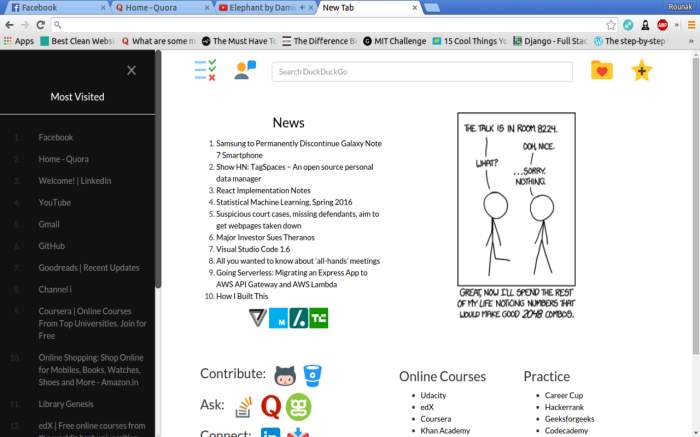
The app also brings you a list of your most visited sites upon request. This ensures that you do not miss out on the latest updates from your favorite sites. There is a Bookmarks link too which brings you a list of your most recent bookmarks.
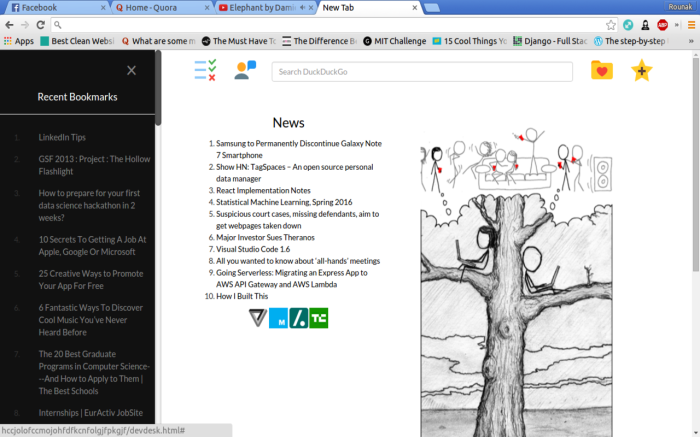
Finally, Developer’s Desktop also acts as repository of links for some of the most useful websites and apps on the Internet. These links are categorized based on their utilities so you’ll know where to go for a particular problem or task.
This project, like the previous two, is open sourced. In addition to accepting pull requests involving code, I am also open to any kind of design revamp suggested to me.
You can find out more about this in the documentation here: Devdesk Documentation
